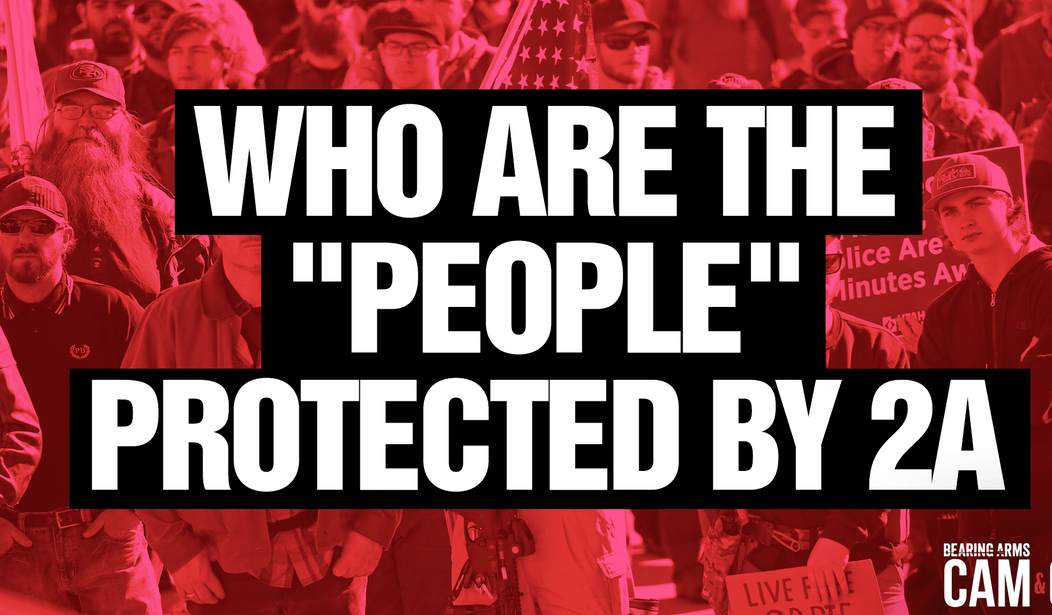Does the right to keep and bear arms apply only to “law-abiding” citizens, and if so, then what’s to prevent state or federal governments from prohibiting gun possession for anyone who’s ever gotten a speeding ticket or smoked a joint (even in states where it’s legal)? Who exactly fits under the Second Amendment’s umbrella of protection for the right of “the people” to keep and bear arms? Those questions are at the heart of a case that could soon be heard by SCOTUS, and the ramifications of any Supreme Court decision are likely to have a major impact on the gun control debate going forward.
New York Times alumnus and retired Supreme Court reporter Linda Greenhouse sees this case, known as U.S. v. Rahimi, a little differently. In her view, a rabidly conservative Fifth Circuit Court of Appeals panel completely disregarded common sense and decades of precedent by ruling that a domestic violence restraining order issued against Zackey Rahimi could not bar him from possessing firearms. While the Fifth Circuit noted at the outset of its opinion that the central question of the case “is not whether prohibiting the possession of firearms by someone subject to a domestic violence restraining order is a laudable policy goal,” but whether the particular federal statute in question is constitutional. And in the Fifth Circuit’s opinion, it isn’t really a close call.
According to the Government, Heller and Bruen add a gloss on the Second Amendment that restricts its applicability to only “law-abiding, responsible citizens,” Heller, 554 U.S. at 635, and “ordinary, law-abiding citizens,” Bruen, 142 S. Ct. at 2122. Because Rahimi is neither responsible nor law-abiding, as evidenced by his conduct and by the domestic violence restraining order issued against him, he falls outside the ambit of the Second Amendment. Therefore, argues the Government, § 922(g)(8) is constitutional as applied to Rahimi.
… Heller explained that the words “the people” in the Second Amendment have been interpreted throughout the Constitution to “unambiguously refer[] to all members of the political community, not an unspecified subset.” 554 U.S. at 580. Further, “the people” “refer[] to a class of persons who are part of a national community or who have otherwise developed sufficient connection with this country to be considered part of that community.” For those reasons, the Heller Court began its analysis with the “strong presumption that the Second Amendment right is exercised individually and belongs to all Americans,” , and then confirmed that presumption.
Heller’s exposition of “the people” strongly indicates that Rahimi is included in “the people” and thus within the Second Amendment’s scope.
The Fifth Circuit did acknowledge repeated references to “law abiding citizens” in the Heller and Bruen decisions, but said the Supreme Court was using that phrase as shorthand “in explaining that its holding (that the amendment codifies an individual right to keep and bear arms) should not “be taken to cast doubt on longstanding prohibitions on the possession of firearms by felons and the mentally ill, or laws forbidding the carrying of firearms in sensitive places such as schools and government buildings.” To assume otherwise would mean that your Second Amendment rights could disappear forever based on a simple traffic infraction or civil citation.
Indeed, the upshot of the Government’s argument is that the Second Amendment right can be readily divested, such that “a person could be in one day and out the next: . . . his rights would be stripped as a self-executing consequence of his new status.” But this turns the typical way of conceptualizing constitutional rights on its head. And the Government’s argument reads the Supreme Court’s “law-abiding” gloss so expansively that it risks swallowing the text of the amendment.
Further, the Government’s proffered interpretation of “law-abiding” admits to no true limiting principle. Under the Government’s reading, Congress could remove “unordinary” or “irresponsible” or “non-lawabiding” people—however expediently defined—from the scope of the Second Amendment. Could speeders be stripped of their right to keep and bear arms? Political nonconformists? People who do not recycle or drive an electric vehicle? One easily gets the point: Neither Heller nor Bruen countenances such a malleable scope of the Second Amendment’s protections; to the contrary, the Supreme Court has made clear that “the Second Amendment right is exercised individually and belongs to all Americans,” Heller, 554 U.S. at 581. Rahimi, while hardly a model citizen, is nonetheless among “the people” entitled to the Second Amendment’s guarantees, all other things equal.
As the Fifth Circuit panel pointed out, if the government really wanted to see Rahimi disarmed, there were other options available, including seeking to hold Rahimi behind bars until his trial for five shootings in and around Arlington, Texas.; a step the government failed to take and allowing Rahini to walk free.
Greenhouse and other supporters of gun control see no issue with the lack of limiting principle in the government’s argument, and the columnist bemoans the current state of affairs in the courts, with the “interest-balancing” test used and abused by lower courts since Heller now off-limits to judges thanks to the “history, text, and tradition” test explicitly laid out by SCOTUS in Bruen. As she concludes her column:
There is no doubt that under the old interest-balancing test, the government would prevail. The interest in keeping guns out of the hands of domestic abusers is that obvious, as even the Fifth Circuit found in 2020. “The parties agree,” the court noted then, “that reducing domestic gun abuse is not just an important government interest, but a compelling one. They only dispute whether § 922(g) (8) is reasonably adapted to that interest. We hold that it is.”
The government’s petition points out that there are more than one million acts of domestic violence in the United States every year “and the presence of a gun in a house with a domestic abuser increases the risk of homicide sixfold.”
Will a fact like that matter to the Supreme Court? Do facts still matter at all? That may now be the most urgent question this case presents, not only to the court but to the country.
I have no idea what SCOTUS will do with Rahimi, and there’s a good chance they’ll do nothing at all; choosing to let the lower courts debate among themselves before stepping in to adjudicate any circuit split at some point in the future. But Greenhouse is fundamentally off-base when she says that the Rahimi case is about “how far the Supreme Court will go to arm America.” At its most basic level, the case is about who, exactly comprises “the people” whose right to keep and bear arms shall not be infringed.










Join the conversation as a VIP Member